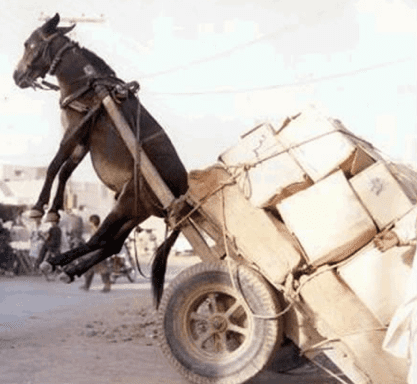
There’s no doubt that in dynamically changing, high-risk, high-consequence environments someone could be called upon to perform many varied tasks, some at the same time.
When staffing levels are low, the likelihood of this situation increases significantly. The problem this creates is the brain does not perform well when task saturated, especially in stressful situations.
Let’s explore what happens and what the impact can be to your situational awareness.
Task saturation
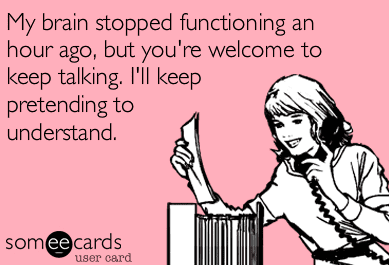 Saturation results when the brain takes in the maximum amount of stimulation it can handle – it’s working at full capacity – yet more and more information is coming in. When the brain gets completely saturated with task demands, it simply cannot process any more information.
Saturation results when the brain takes in the maximum amount of stimulation it can handle – it’s working at full capacity – yet more and more information is coming in. When the brain gets completely saturated with task demands, it simply cannot process any more information.
Think of the ground during a major rain storm. When the rain is light or moderate, the ground is able to soak it up and the water gets into the soil. When task demands are low or moderate, the brain is able to soak it up and information gets into the neurons. However, if it keeps raining… and raining… and raining… and the flow of water becomes greater than the soil can absorb, the ground becomes water saturated and no more rain gets into the ground. Instead, the water runs off the land and can cause destructive flooding.
The same is true of task saturation. When information keeps coming into the brain… and coming… and coming… the flow of information can become greater than the brain can absorb. The brain becomes task saturated and no more information gets in.
Prioritizing
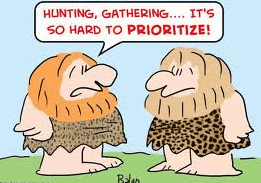 I spend a considerable amount of time explaining task saturation, and it’s consequences, during my situational awareness programs because people are under the false belief they can handle the load or, when the load becomes too great, they can simply prioritize the information and keep the most important and let the least important flow out of the brain.
I spend a considerable amount of time explaining task saturation, and it’s consequences, during my situational awareness programs because people are under the false belief they can handle the load or, when the load becomes too great, they can simply prioritize the information and keep the most important and let the least important flow out of the brain.
Unfortunately, this isn’t how your brain works under stress. When you are barraged with information, your brain will decide what information it keeps and what information it lets go, outside of your conscious control. Just like you cannot control which droplets of water get absorbed into the ground and which are let to run off, you cannot compel you brain to keep certain information and let go of other information at will.
Because this forgetting happens without conscious control, what you forget can be some of the most important information you wish you would have remembered. This lesson usually comes after the fact.
What sticks?
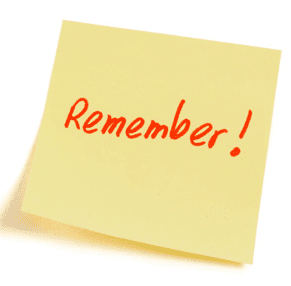 If your brain is not good at remembering volumes of information when it becomes saturated, and it chooses (outside of your conscious awareness) to keep some information and shed other information, what information “sticks” in memory? Research suggests there are two characteristics of information that improve it’s likelihood of being remembered. First is familiarity with the information. If you are familiar with the information because of past experience or past training it’s more likely to “stick” – to be remembered. The second is emotional triggers. If the information triggers an emotional response, it’s more likely to “stick” – to be remembered.
If your brain is not good at remembering volumes of information when it becomes saturated, and it chooses (outside of your conscious awareness) to keep some information and shed other information, what information “sticks” in memory? Research suggests there are two characteristics of information that improve it’s likelihood of being remembered. First is familiarity with the information. If you are familiar with the information because of past experience or past training it’s more likely to “stick” – to be remembered. The second is emotional triggers. If the information triggers an emotional response, it’s more likely to “stick” – to be remembered.
Situational Awareness Impact
Your situational awareness begins with your ability to capture information (clues and cues) that happen in your environment. This is the foundation for situational awareness. Then, the information must be comprehended – understood. If you are taking information in and not understanding what it means, you will not have strong situational awareness. When you are task saturated, your ability to capture information AND your ability to understand what is happening are both impacted.
Dr. Gasaway’s Advice
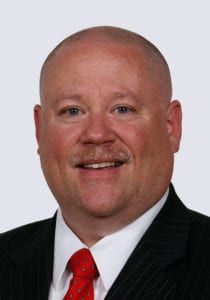 Here are five potential solutions to help you with the challenge of being task saturated.
Here are five potential solutions to help you with the challenge of being task saturated.
The first, and perhaps the most obvious, is to avoid putting yourself in a situation where your brain will become task saturated. This can be easier said than done because sometimes the situations leading to task saturation are unexpected or unpredictable. However, this is not always the case.
There are people who routinely work in task saturated environments, suffer the ill effects, and continue to expose themselves to the dangers of having their situational awareness impacted by doing it over and over again. The lack of consequence may give them a false sense of confidence that they are a good “multitasker” (which is a complete myth).
Second, if you can anticipate environments where task saturation will occur, arrange to have someone – or several someones – help you manage information. If the rain falls over a larger geographic landscape, there is more ground to soak it up. If the information is shared over several brains, there are more neurons to process it. The trick here is to assign specific tasks to each person so everyone doesn’t become task saturated by trying to process all the same information. Not delegating the tasks to specific people defeats the purpose of getting help to manage information.
Third, is to write things down. While this seems like such a simple idea, so many people are either ill-equipped to write something down (no immediate access to a pen and paper), or they are so overwhelmed in the moment that they forget to write things down. Writing things down is like taking a bucket and scooping up the “important” water before it runs off the land. The bucket allows you to capture and hold your important water. The note pad allows you to capture and hold your important information. That way, when you start getting task saturated and forgetting information, you can refer to your notes.
Four, use checklists. A checklist contains memory prompts of the things you are supposed to do (or not do) when you are faced with a situation. The greater the stress and potential consequences of your action and the more time compressed your decision environment, the more likely you are to not remember all the things you are supposed to do. The checklist helps you to remember in the heat of the moment.
Five, create acronyms to use as memory prompts for critical tasks. For example, when assessing a patient, first responders are taught ABC’s, which stands for Airway, Breathing and Circulation. We live in a society that is replete with acronyms: UPS, ATM, NBA, BOGO, IRS, AKA, ASAP, TLC. And then… there’s: LOL, ROTF, BRB, BFF, TTYL… OMG! You get the idea. Acronyms “stick!”
Action Items
 1. Discuss a time when you were task saturated and what consequences it had on your situational awareness.
1. Discuss a time when you were task saturated and what consequences it had on your situational awareness.
2. Discuss the strategies you can use to keep yourself from becoming task saturated.
3. Discuss how you can help co-workers from becoming task saturated.
About the Author
Richard B. Gasaway, PhD, CSP is widely considered a trusted authority on human factors, situational awareness and the high-risk decision making processes used in high-stress, high consequence work environments. He served 33 years on the front lines as a firefighter, EMT-Paramedic, company officer, training officer, fire chief and emergency incident commander. His doctoral research included the study of cognitive neuroscience to understand how human factors flaw situational awareness and impact high-risk decision making.
_____________________________________________________

If you are interested in taking your understanding of situational awareness and high-risk decision making to a higher level, check out the Situational Awareness Matters Online Academy.
CLICK HERE for details, enrollment options and pricing.
__________________________________
Share your comments on this article in the “Leave a Reply” box below. If you want to send me incident pictures, videos or have an idea you’d like me to research and write about, contact me. I really enjoy getting feedback and supportive messages from fellow first responders. It gives me the energy to work harder for you.
Let’s Get connected
Facebook: SAMatters
LinkedIn: Rich Gasaway
LinkedIn: Situational Awareness Matters
Twitter: Rich Gasaway
Youtube: SAMattersTV
itunes: SAMatters Radio
Stitcher Radio: SAMatters Radio
Google Play: SAMatters Radio
iHeart Radio: SAMatters Radio

As an educator of 25 years, I should have reached some type of comfort in my profession. This is not the case. The morale in teaching is at an all time low. Teachers are faced with overwhelming task saturation. Every year districts continue to pile on new programs, additional data keeping systems, school goal plans, additional testing, more progress reports, additional learning standards to teach and track all in 30 minutes a day of planning. Currently I must work out of five data systems. 1. Teacher evaluation program providing year long assessment data and artifacts to prove I am worthy ( nobody even looks because principals are task saturated too) in areas like collaboration, subgroups, and whole class instruction 2. Monthly progress reports of all lessons given and grades for each. 3. Statewide kindergarten assessments of approximately 100 skills to be videoed, photographed or narratives. 4. district report cards, separate than monthly progress attached to Common Core State Standards. 5. Schoology uploaded work for students that have missed school. In addition to CCSS I must create a learning plan with goals for my students. We also have student improvement goals separate frim everything else that we must track progress toward. We now must grade PE on each of the standards rather than a pass or fail (we teach ourselves). The state just adopted a new approach to Social Emotional Learning that we will begin tracking at the beginning of 2022. Staff development includes learning things like google certification, posting to the web using Grackle, adding captions to videos, becoming versed in Critical Race theory, what plan to have during emergencies, online training for sexual harassment, weapons, internet use, intruders, sick kids as soon as one training is over, another pops up. This is just dome of my duties and the children have not even walked in the door. When my 24 children show up, they don’t always come ready to learn. Some have extreme behaviors, iEP’s with accommodations. Some destroy your classroom and the teacher is expected to fix materials and reorganize after school. The district now wants more communication with parents. More news letters, office hours, emails, etc… I need to differentiate instruction remediate and extend, grade papers, clean the classroom, prep materials, make copies. The district has adopted more testing, so chrome-books need to be assigned, log ins assisted, date picked three times per year on multiple tests. I am paid from 8:15 am to 3:40. The children begin arriving in class at 8:40 and are dismissed at 3:00 however we stay with them till 3:15 as parents pick up. I have one 30 minute planning time within my day. Lunch is 30 minutes. 1 ten minute break to use the restroom ( I never take my break or lunch). Basically a teacher is given about 20 minutes before school and 20 minutes after, oh but wait, the district now believes the 20 minutes after should be used for parent outreach, not grading, or preparing projects, or tidying up your space that just had 24 children that can be messy. Oh maybe I should have spent extra time on clean up, but how could I when the state keeps adding learning standards and testing for students I will be evaluated on. I’ve been told that if you taught each standard correctly, it would take 7 years per grade level. i only have 181 days to fit the 7 years in. I go over in my mind which data sustem I will try to open today. 30 minutes turns into 2 hours, and I have not even touched the other four. I need to make copies, create some differentiated instruction, check out library nooks, prep an art project, find some things for a cool science experiment, email five parents. Oops, I arrived at work at 7:20, skipped breaks and lunch, it’s now 6:00pm. I grab my computer, I can work on things at home and on the weekend. i know my family wants to fo something fun, I hope i can fit ghat in. I hope nobody comes to vidit because I don’t have time for friends during the school year. i saw three teachers this week in tears. One stated she flipped out on her family, I get it I say. I am resentful at times that other people can relax. Not me. I olan in my mind my 7 day work schedule just yo stay afloat. When a teacher is sick now, it is hard to find a sub. Nobody can do this job anymore. No pay raise can create more hours in your day or week. Someone needs to study the current stresses of teaching. We came for the students, however they now get less time than the other duties. Countdown for me…